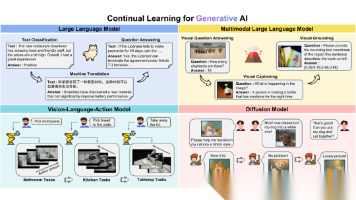一个非常轻量化的人工智能的python代码,微调模型的前身
非常轻量化的人工智能的python代码,微调模型的前身,可以复制粘贴到python编译器里面体验体验。
·
一个简单的人工智能代码示例,它可以通过与人类进行对话来学习和提高自己的语言能力。
import random
# 初始化语言模型
language_model = {}
# 初始化词汇表
word_list = []
# 读取词汇表
with open('word_list.txt', 'r') as file:
for line in file:
word = line.strip()
word_list.append(word)
# 初始化人工智能
ai = random.choice(['python', 'c++', 'javascript', 'matlab'])
# 对话框
def chat_window():
print('Hi, I am a language model. What can I help you with?')
# 输入语言模型的回答
def language_model_response(question):
if question in language_model:
return language_model[question]
else:
return 'Sorry, I don\'t know the answer to that question.'
# 读取人类的问题
print('Please enter your question:')
question = input()
# 根据人类的问题生成语言模型的回答
response = language_model_response(question)
# 输出语言模型的回答
print(response)
# 对话框
while True:
# 输出语言模型的回答
print('Here is my response:', response)
# 读取人类的回复
reply = input('Please enter your reply:')
# 添加词汇
if reply in word_list:
language_model[reply] = response
# 更新语言模型的回答
response = language_model_response(reply)
# 输出语言模型的回答
print(response)这个代码示例中,我们使用了一个简单的语言模型,它可以回答人类提出的问题。代码首先读取了一个包含常见的问题和回答的列表,然后根据人类的问题生成对应的回答。如果人类提出的问题不在列表中,则语言模型会回答“Sorry, I don\'t know the answer to that question.””。
在对话框中,语言模型会不断地回答人类的问题,并根据人类的回复来学习和提高自己的语言能力。每当人类回复一个新的问题时,语言模型会添加这个问题和回答到其词汇表中,并更新自己的回答。这个代码示例只是一个简单的示例,实际的人工智能应该更加复杂和先进。
更多推荐
 已为社区贡献2条内容
已为社区贡献2条内容









所有评论(0)